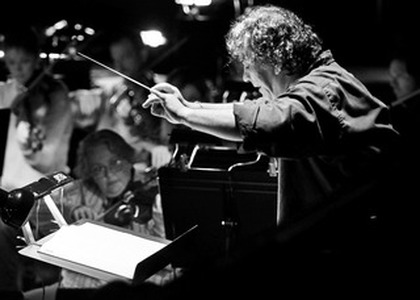> [Archived] Interviews

Interview with conductor Nicolae Moldoveanu
After his presence in the 2021 edition of the George Enescu International Festival, the horn player Felix Klieser returns to Romania for a concert that he will be hold together with the Radio Chamber Orchestra, on February 23rd. In the second part of the event, the Academic Radio Choir will be present on stage, along with soloists Ramona Mardare, GraziellaFrangulea, Nicolae Simonov and Cristian Coandă. You can find out more details about this event from Nicolae Moldoveanu- the conductor of the evening.
You are back at the Radio Hall, this time together with the Radio Chamber Orchestra and the horn player Felix Klieser. You also collaborated with the musician in September 2021, when you held a concert together at the Enescu Festival. What do you think are the strengths of this musician for whom the public should not bypass the Radio Hall on February 23rd?
Undoubtedly, the horn player Felix Klieser is an international figure not only in terms of the appearance of the artistic standard, but also when it comes to the appearance of Felix Klieserthe man.He participated in the Enescu Festival collaborating with the London Mozart Players Orchestra, I myself being the conductor. In the meantime, Felix Klieser became a soloist in residence with the Bournemouth Symphony Orchestra, and I was also, coincidentally, a former collaborator of this orchestra. So, there is already a relationship welded both artistically and personally.
With a previous occasion, you talked about the stylistic and even geographical connections that bind the three composers who are part of Wednesday's concert program - Schubert, Richard Strauss and Haydn. So, what is the red thread that unifies the three works?
Here I have to tell you an anecdote. I live in Switzerland, I fly from Zurich to Bucharest, and this air route passes right over the territories where these three composers were active. This is Strauss - Garmisch-Partenkirchen, a town in Bavarian Germany, followed by Vienna, where Schubert was born and was active, and Eisenstadt, where Haydn was active. So, coincidentally, this air route fits exactly. I thought about this while I was on the plane and studied Haydn's Messa score, wondering what kind of influence it would have had to be able to travel by plane for any of these three composers. Undoubtedly, this is the line I have chosen to unite the three composers.
Because I mentioned earlier the concert at the Enescu Festival - now, as then, you will end with a Mass, this time one of the creations of Joseph Haydn. In fact, you often end up conducting concerts with works of sacred music. What are the reasons behind this choice?
There is no specific reason, other than the fact that, of course, this is a first collaboration with the wonderful Radio Choirand I tried to find out what repertoire these people would like to approach. Given that the pandemic situation and restrictions are still unsolved, I wasn't sure what kind of repertoire I could choose. This Mass, Haydn's Harmonie Messe, is a very important piece in the choral repertoire, and I chose it from a musical point of view. This Mass was composed in 1804, so we speak abouttheperiod when classicism was already over. It was written before the Italian-style Overture composed by Schubert only 10-15 years ago. And Richard Strauss fits in perfectly. Strauss wrote Concert no.1in E flat major in the second half of the 19th century. The connection was very clear between these pieces. I begin with an Italian-style Overture by Schubert, followed by Felix with this first concert by Richard Strauss, followed by Mass by Haydn. Harmonie Messe does not refer to harmony, but to the fact that the whole band of woodwinds is present.
Translated by Diana-Maria Croitoru,
University of Bucharest, Faculty of Foreign Languages and Literatures, MTTLC, year II
orrected by Silvia Petrescu














